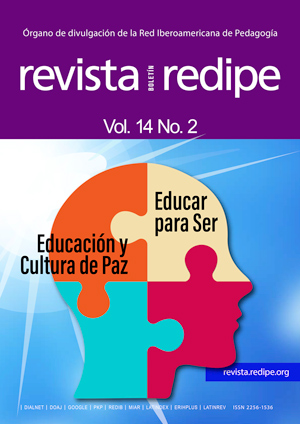Virtual museums in the teaching and learning of history in the third year of high school
Main Article Content
Keywords
Virtual museums, Teaching and learning history, Class guide, Active participation, Interactivity
Abstract
Learning History is essential to understand the past, analyze the present and project the future, fostering critical skills, empathy and a collective identity. However, its teaching faces challenges such as superficial memorization, disconnection with daily life and the perception of the subject as boring. To overcome these limitations, this research proposes the use of virtual museums as an innovative teaching strategy for thirdyear high school students of the “Atahualpa” Bilingual Intercultural Community Educational Unit in Chauzan Totorillas, Guamote canton, Chimborazo. The study adopted a mixed approach. In the qualitative aspect, documentary analysis and narrative-phenomenological design were applied to understand the experiences of teachers. In the quantitative aspect, structured questionnaires were used to measure student perception, which allowed the implementation of the strategy in the selected group, evaluating its educational impact. The research selected virtual museums from Mexico, Peru and Spain, focused on the Mayan, Aztec and Incan cultures, aligned with the contents of the national curriculum. These resources offered interactive and multimedia experiences that energized the teaching and learning of History. The showed that virtual museums increased student motivation, improved historical understanding, and transformed the perception of the subject from boring to dynamic, interesting, and participatory results. The technological barriers inherent to rural areas, such as the institution under investigation, were overcome, which guaranteed their use and application. In conclusion, the teaching strategy used contributed to the development of relevant, functional, and longlasting learning thanks to the innovative teaching offered by virtual museums, consolidating their effectiveness in diverse educational contexts.
References
Araujo, R., & Linares, X. (2020). The tours in virtual museums a didactic opportunity in social sciences. En 2020 X International Conference on Virtual Campus (JICV) (pp. 1-4). IEEE. https://doi.org/10.1109/ JICV51605.2020.9375662
Benítez, C., Gonda, D., & Pereira, C. (2018). La historia desde la perspectiva de los alumnos del Bachillerato Diversificado. Cuadernos De Investigación Educativa, 1(2), 16–19. https://doi.org/10.18861/ cied.1997.1.2.2811
Calvas, M. G., Espinoza, E. E., & Herrera, L. (2019). Fundamentos del estudio de la historia local en las ciencias sociales y su importancia para la educación ciudadana.
Conrado, 15(70), 193-202. http:// scielo.sld.cu/scielo.php?pid=S1990- 86442019000500193&script=sci_arttext
Carmona, A., & Pérez, R. (2021). ¿Cómo han evolucionado los museos desde el punto de vista didáctico? (tesis de maestría). Universidad de La Laguna. San Cristóbal de La Laguna, España. p. 52. https:// riull.ull.es/xmlui/handle/915/24880
Carrera, R., Gavilánez, L., & Tenorio, S. (2022). Efecto de las estrategias virtuales en enseñanza-aprendizaje en nivel Tecnológico Superior. Revista Científica Y Tecnológica VICTEC, 3(5), 29–45. https://server.istvicenteleon.edu.ec/ victec/index.php/revista/article/view/84
Cedeño, M., Pico., Palacios, L., & Niemes P. (2021). La efectividad de la educación virtual frente a la pandemia en Ecuador. Dominio De Las Ciencias, 7(2), 959–967. https://doi.org/10.23857/dc.v7i2.1839
García, G. (2021). Enseñar historia en las escuelas públicas del siglo XXI. ¿ Qué historia enseñar y para qué?. Didáctica de las ciencias experimentales y sociales, (40), 35-50. https://doi. org/10.7203/dces.40.16835
García, M., & Gutiérrez , S. (2018). El museo como espacio multicultural y de aprendizaje: algunas experiencias inclusivas. Revista Liño, 24(24), 117–128. https:// doi.org/10.17811/li.24.2018.117-128
Gómez, Marbelys. (2021). Los museos en la conquista del espacio virtual en tiempos de re-contextualizaciones. Alcance, 10(25), 387-391. http:// scielo.sld.cu/scielo.php?script=sci_ arttext&pid=S2411- 99702021000100387
Hernández, A. (2019). El museo en el aula: una propuesta de trabajo a través del museo virtual [Tesis de Maestría, Universidad de Murcia]. http://hdl. handle.net/10201/75688
Jara, E., & Simón, I. (2023). El Museo de América de Madrid en tres momentos de su historia. Americania Revista De Estudios Latinoamericanos de La Universidad Pablo de Olavide de Sevilla, 1(18), 13–46. https://www. upo.es/revistas/index.php/americania/ article/download/7887/8369/39267
Jiménez, F., & Montecinos, C. (2019). Polifonía en educación multicultural: enfoques académicos sobre diversidad y escuela. Magis, Revista Internacional De Investigación En Educación, 12(24), 105–128. https:// doi.org/10.11144/Javeriana.m12-24. peme
Lahera, D., & Pérez, F. A. (2021). La enseñanza de la historia en las aulas: un tema para reflexionar. Debates por la Historia, 9(1), 129-154. https://doi.org/10.54167/ debates-por-la-historia.v9i1.629
Llorente, M. (2019). El museo como recurso didáctico en el proceso de enseñanza – aprendizaje. Publicaciones Didácticas, (104), pp. 475-711. https://core.ac.uk/ download/pdf/235850317.pdf
López, M. (2019). Las narrativas de la inteligencia artificial. Revista de Bioética y Derecho Perspectivas Bioéticas, (45), pp. 5-28. ISSN 1886-5887. https://doi. org/10.1344/rbd2019.0.27280



